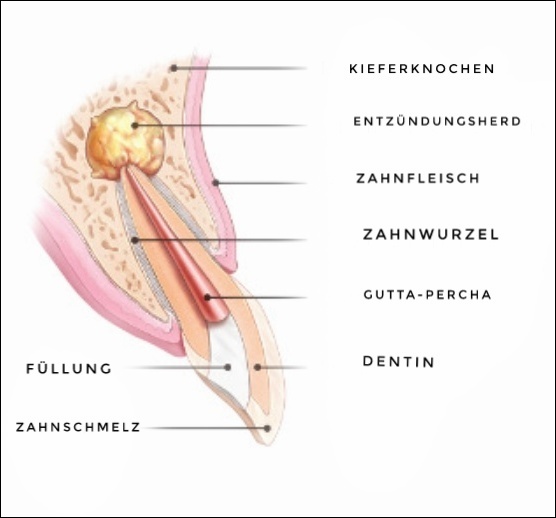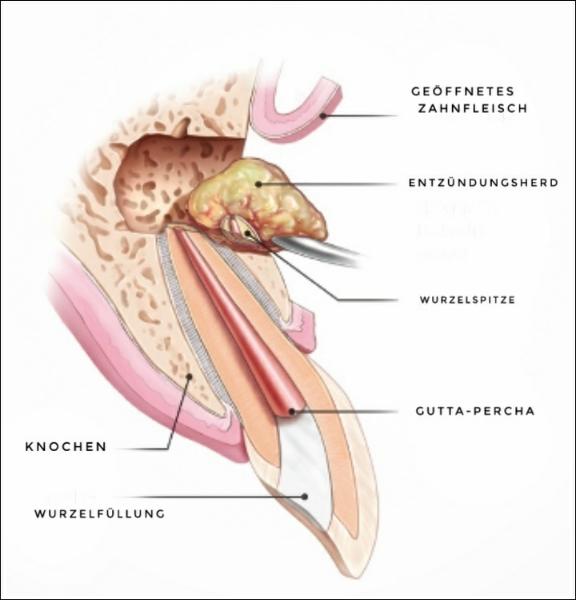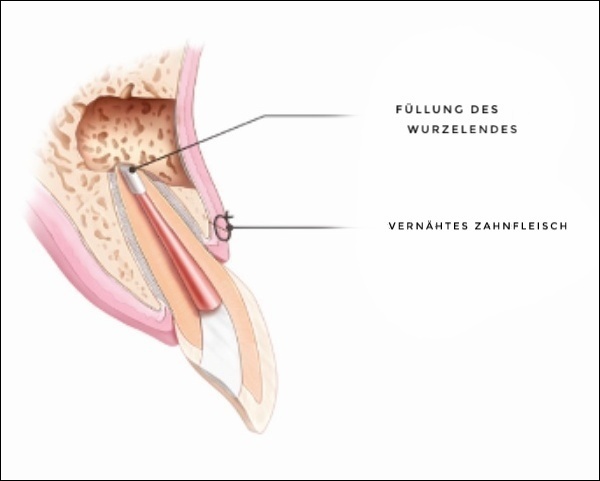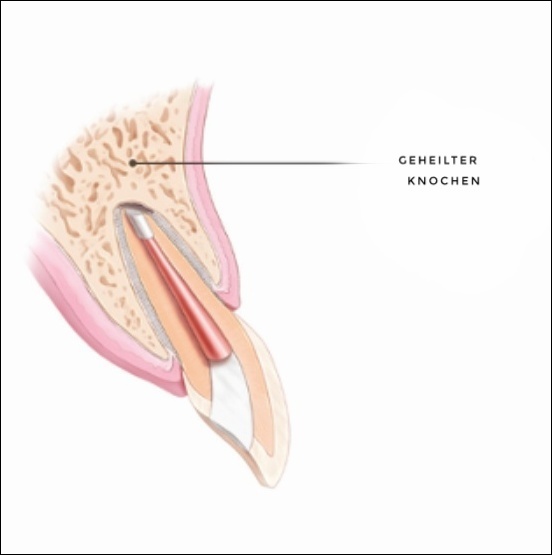Microscopic root end surgery
Microscopic root end surgery
In general there are two ways of treating an infected root canal treated tooth.
The first option is revision therapy: a new conventional root canal treatment under improved technical conditions, which in most cases is the gentlest and most promising treatment option.
The process of root end surgery
After precise, three-dimensional diagnostics and consultation, a small incision is made in the gum in the area to be operated on, through which the entire treatment is carried out.
The area around the root tip is now cleaned with tiny drills and the root is shortened by a few millimetres. Now, in order to achieve lasting success, root canal treatment must be carried out from the bottom to the top of the root canal using the finest ultrasonic instruments in order to remove the bacteria and dead nerve tissue.




The cause of the inflammation is to be found inside the affected tooth in the form of bacteria, so the bacteria-proof sealing of the root is of particular importance.
As the end of the root tip is located inside the body, the filling material used must remain sealed in the long term, even under the influence of moisture, in order to be absolutely biocompatible and tissue-friendly.
Clinical studies have shown that mineral trioxide aggregate (MTA) is currently the most suitable material. Only this very high-quality material is used in our practice for every apicoectomy.
Aim of an apicoectomy
- The cause of toothache should be remedied as quickly as possible
- The highest possible success rate of up to 95% has been proven by studies -> with modern surgical methods and correct
- Indication – depending on the tooth region
- Preservation of strategically important teeth – e.g. denture abutment teeth, end teeth of the row of teeth or front teeth
What is microsurgery?
- minor intervention
- Minimal pain and swelling
- Short wound healing time
- No/hardly any scarring
- perfect aesthetics
What should I do after the procedure?
If possible, you should cool the treated area as much as possible and take it easy physically. Unless otherwise recommended by your GP, you are welcome to use the anti-inflammatory and pain-relieving effects of ibuprofen or paracetamol. Unless prescribed by a general practitioner, you should not take aspirin, as the active ingredient ASA reduces blood clotting and can therefore lead to secondary haemorrhaging more easily.
Please consult your dentist immediately in the event of severe discomfort and/or secondary bleeding.
Patient OPINIONS
Great doctor
Thorough diagnosis; honest recommendation not to carry out the planned special treatment in my case, thus saving me unnecessary treatment costs.
Friendly and competent
I felt safe and in good hands from the very first moment. Dr Planert took the time to answer my questions and explained everything clearly.
Outstanding!
I am completely satisfied! Very courteous reception... Advice and treatment at a very high level. Can recommend Leipziger14-Ihre Zahnärzte and Mr Planert with a clear conscience!"
Great doctor
Thorough diagnosis; honest recommendation not to carry out the planned special treatment in my case, thus saving me unnecessary treatment costs.
Outstanding!
I am completely satisfied! Very courteous reception... Advice and treatment at a very high level. Can recommend Leipziger14-Ihre Zahnärzte and Mr Planert with a clear conscience!"
Friendly and competent
I felt safe and in good hands from the very first moment. Dr Planert took the time to answer my questions and explained everything clearly.

